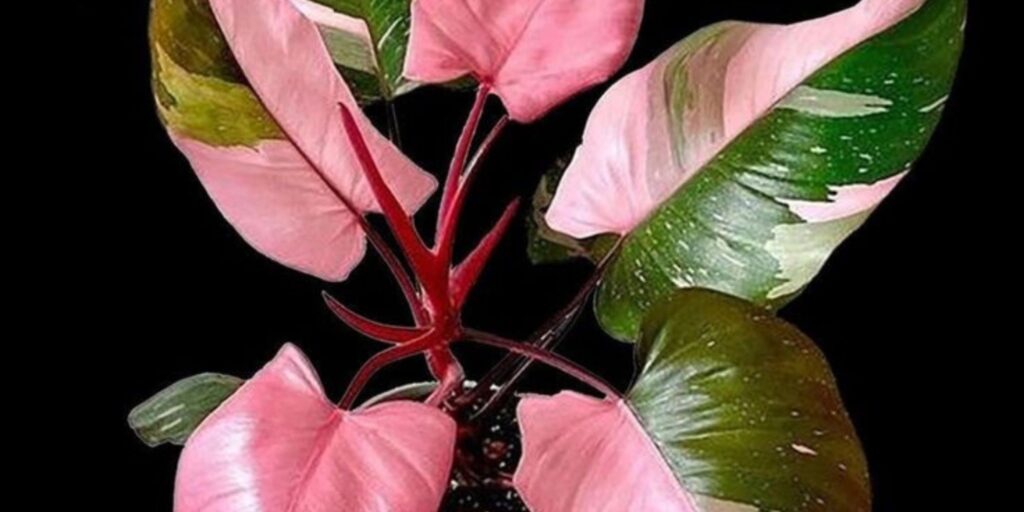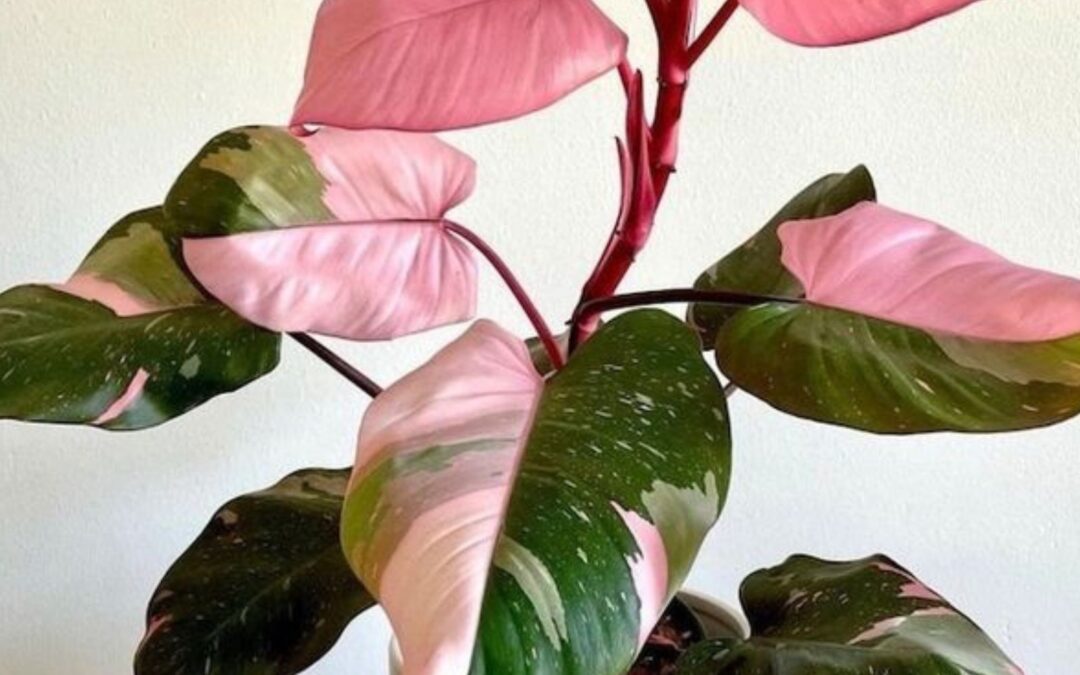Introduction
If you’re on the hunt for a stunning houseplant that stands out from the crowd, look no further than the Pink Princess Plant. With its striking pink and green variegation, this plant has captured the hearts of plant enthusiasts worldwide. It’s not just about aesthetics; caring for a Pink Princess can be an incredibly rewarding experience. Whether you’re adding to your collection or diving into indoor gardening for the first time, this guide will provide everything you need to know about keeping your Pink Princess thriving in your home. Let’s uncover what makes this botanical beauty so irresistible!
The Allure of the Pink Princess Plant: A Guide to Its Care and Cultivation
The Pink Princess Plant, known scientifically as Philodendron erubescens, is a showstopper. Its vibrant pink splashes against glossy green leaves create a visual feast that makes it a favorite among collectors and casual plant lovers alike.
Beyond its beauty, the plant boasts unique characteristics that make it relatively easy to care for. With the right attention and conditions, you can enjoy its stunning foliage year-round. Let’s dive deeper into how to cultivate this captivating addition to your indoor garden with tips and tricks suited for every level of experience.
Understanding Pink Princess Philodendron Care

Caring for a Pink Princess Plant involves understanding its specific needs. This stunning houseplant thrives in bright, indirect light but can tolerate lower levels as well. However, too much direct sunlight may scorch those beautiful pink leaves.
Watering is crucial—let the top inch of soil dry out before watering again. Ensure your pot has good drainage to prevent root rot. Regularly check humidity levels; these plants prefer environments with higher humidity to maintain their vibrant colors and overall health.
Pink Princess Plant :Tips for Beginners
Starting your journey with the Pink Princess Plant can be exciting. Ensure you choose a healthy specimen by checking for vibrant leaves and no signs of pests. A well-draining potting mix is essential for this beauty, as it prefers moisture without sitting in water.
Light conditions are crucial too. Aim for bright, indirect sunlight to enhance its stunning variegation. Regularly check humidity levels; this plant thrives in higher humidity environments. With patience and attention, you’ll soon enjoy the charm that only a Pink Princess can bring to your space.
Pink Princess PTemperature and Humidity
The Pink Princess Plant thrives in warm temperatures, ideally between 65°F and 80°F. Extreme cold can stunt its growth or even damage the leaves. Be mindful of sudden temperature drops; they can stress the plant.
Humidity plays a crucial role too. This tropical beauty loves humidity levels around 60% or higher. If your home is dry, consider using a humidifier or placing a pebble tray with water beneath the pot. These steps will keep your Pink Princess happy and vibrant, promoting healthy foliage and growth throughout the seasons.
Fertilizer
Fertilizing your Pink Princess Plant is essential for encouraging vibrant growth and maintaining its striking variegation. Use a balanced, water-soluble fertilizer every four to six weeks during the growing season. This will provide the necessary nutrients without overwhelming your plant.
In winter, reduce feeding as the plant enters dormancy. Always dilute the fertilizer to half-strength to prevent root burn. Pay attention to how your Pink Princess responds; if new leaves appear pale or small, it may be time to adjust your fertilization routine for optimal health and color.
Pruning Techniques
Pruning your Pink Princess Plant is essential for maintaining its health and encouraging new growth. Start by using clean, sharp scissors to remove any dead or yellowing leaves. This helps the plant focus its energy on healthier foliage.
You can also trim back leggy stems to promote bushier growth. Aim to cut just above a leaf node, which encourages the plant to branch out. Regular pruning not only keeps your Pink Princess looking vibrant but also enhances its overall structure and vitality.
Dealing with Pests
Pests can be a nuisance for your Pink Princess Plant, but with vigilance, you can keep them at bay. Common culprits include spider mites, aphids, and mealybugs. Regularly inspect the leaves for any signs of infestation. If you spot pests, act quickly to prevent further damage.
Using insecticidal soap or neem oil is effective in treating minor infestations. Simply spray the affected areas thoroughly and repeat every week until the problem subsides. Maintaining good air circulation around your plant also helps deter pests from settling in for too long.
Keeping Your Pink Princess Healthy

To keep your Pink Princess Plant thriving, ensure it receives bright, indirect light. Direct sunlight can scorch its stunning leaves, leading to damage. Rotate the plant occasionally for even growth and coloration.
Watering is crucial but should be done carefully. Allow the top inch of soil to dry before watering again. Maintain humidity levels around 50% or higher for best results. Regularly wipe down the leaves to remove dust and allow them to breathe properly; this simple act promotes better photosynthesis and overall health in your beautiful plant.
Repotting Guidelines
Repotting your Pink Princess Plant is essential for its health and growth. Choose a pot that’s one size larger, ensuring it has drainage holes. Use a well-draining potting mix to provide the right environment for roots.
Timing is important too; spring or early summer are ideal. Gently remove the plant from its current pot, taking care not to damage the roots. If you notice root rot, trim away any unhealthy sections before placing it in fresh soil. Water thoroughly after repotting to help settle the new medium around the roots.
Identifying Common Problems
The Pink Princess Plant is stunning but can encounter a few issues along the way. Understanding these common problems helps keep your plant healthy and vibrant.
Loss of pink coloration often stems from insufficient light, while leggy growth indicates it’s searching for more sunlight. Browning leaves may be due to underwatering or low humidity, and variegation browning can signal excess direct sunlight. Observing these signs early allows you to adjust care methods effectively and maintain your plant’s beauty.
Loss of Pink Coloration
Loss of pink coloration in your Pink Princess Plant can be concerning. This issue often arises from insufficient light. These plants thrive in bright, indirect sunlight. If placed in dim areas, they may revert to solid green leaves.
Another factor could be nutrient deficiency. Ensure your plant receives proper fertilization to maintain its vibrant hues. Additionally, consider the age of the plant; older foliage might lose color as it matures. Regularly monitor your plant’s environment and care routine for optimal health and stunning colors.
Leggy Growth
Leggy growth in your Pink Princess Plant can be frustrating. This typically occurs when the plant doesn’t receive enough light, causing it to stretch toward the nearest light source. The result is elongated stems with sparse leaves, detracting from its beauty.
To remedy this issue, consider relocating your plant to a brighter spot that offers indirect sunlight. Additionally, regular pruning might help encourage bushier growth and maintain that coveted compact shape. With proper attention, you can restore the vibrant allure of your Pink Princess without sacrificing health or aesthetics.
Browning Leaves
Browning leaves on your Pink Princess Plant can be alarming. This issue often arises from underwatering, where the plant lacks essential moisture to thrive. Always check the soil’s dryness before watering again.
On the other hand, excessive direct sunlight can scorch those beautiful leaves too. If you notice browning tips or edges, it may indicate a need for more filtered light. Adjusting its position could make all the difference in maintaining that vibrant look you’re after.
Variegation Browning
Variegation browning is a common issue with the Pink Princess Plant. This problem occurs when the beautiful pink and green leaves begin to lose their vibrant color, turning brown or even crispy along the edges. It can be alarming for plant enthusiasts who cherish the striking appearance of this variety.
The main causes often include inconsistent watering, too much direct sunlight, or nutrient deficiencies. Monitor your care routine closely to maintain that coveted coloration. Adjusting light levels and ensuring proper moisture can help rejuvenate those stunning hues while keeping your plant looking its best.
Purchasing and Maintaining Your Pink Princess
When considering a Pink Princess Plant, keep an eye on factors that influence its cost. Rare varieties can be pricier, while standard ones are more budget-friendly. Researching sellers and checking for reputable nurseries can help you find a healthy option at the right price.
Selecting the right plant is crucial. Look for vibrant pink variegation and sturdy leaves free from blemishes. Additionally, inspect roots if possible; they should be firm, not mushy. Knowing where to purchase—online or local shops—can make all the difference in securing your perfect Pink Princess.
Factors Affecting Cost
The cost of a Pink Princess Plant can vary significantly based on several key factors. Rarity plays a major role; the more sought-after varieties often come with a higher price tag due to limited availability.
Additionally, the size and maturity of the plant influence its cost. Younger plants are generally more affordable, while larger specimens or those with extensive variegation tend to be pricier. Seasonal demand can also impact prices, especially during spring when many gardening enthusiasts are eager to add this stunning plant to their collection.
Selecting the Right Plant

When selecting the right Pink Princess Plant, look for vibrant pink and green variegation on the leaves. Healthy foliage is essential; avoid plants with yellowing or browning spots. Check for pests hiding in the crevices too.
Consider the plant’s size and growth potential. A smaller plant may be easier to manage, while a larger one can make a bold statement. Ensure it fits your space and lifestyle preferences before making a choice. Each Pink Princess has its unique charm, so find one that resonates with you!
Shopping Tips
When shopping for a Pink Princess Plant, look closely at the leaves. Healthy foliage should display vibrant pink and green variegation. Avoid plants with yellowing or browning leaves, as these may indicate underlying health issues.
Consider purchasing from reputable nurseries or online retailers that specialize in rare plants. Check customer reviews to ensure quality and authenticity. If possible, ask about the plant’s growth history and care conditions to gauge what you can expect after bringing it home. Taking these steps will help you find a thriving Pink Princess to add to your collection.
Where to Purchase
Finding the perfect Pink Princess Plant can be an exciting adventure. Start by checking local nurseries or garden centers, where you might discover healthy specimens and knowledgeable staff who can offer guidance. Plus, seeing the plant in person allows you to assess its condition.
If you’re looking for more options, online retailers are plentiful. Websites like Etsy and specialized plant stores often carry a variety of sizes and prices. Just ensure they have good reviews to guarantee a quality purchase that meets your expectations.
Evaluating if the Pink Princess Plant is Suitable for You
The Pink Princess Plant is a stunning addition to any indoor garden. Before bringing one home, consider your lifestyle and commitment level. This plant enjoys specific care, which means you’ll need to be attentive.
If you have bright but indirect light in your space, that’s a great start! Also, think about how much time you’re willing to dedicate to watering and monitoring humidity levels. If this sounds manageable, the Pink Princess could thrive with you.
However, if you’re often away or prefer low-maintenance plants, it might not be the best fit. Assessing these factors will help ensure both you and your plans are happy together. Owning a Pink Princess can be rewarding for those ready for its unique charm and care requirements.

